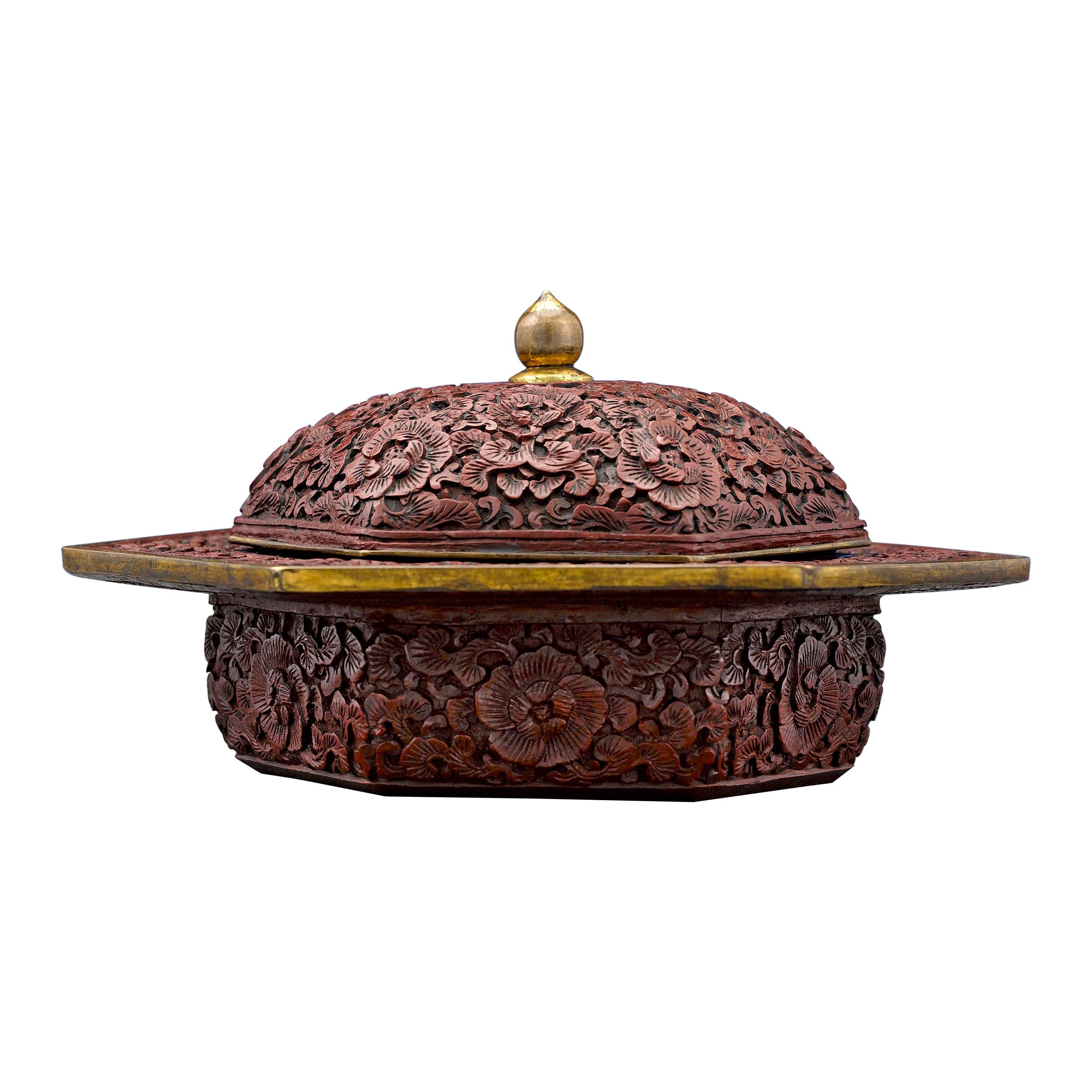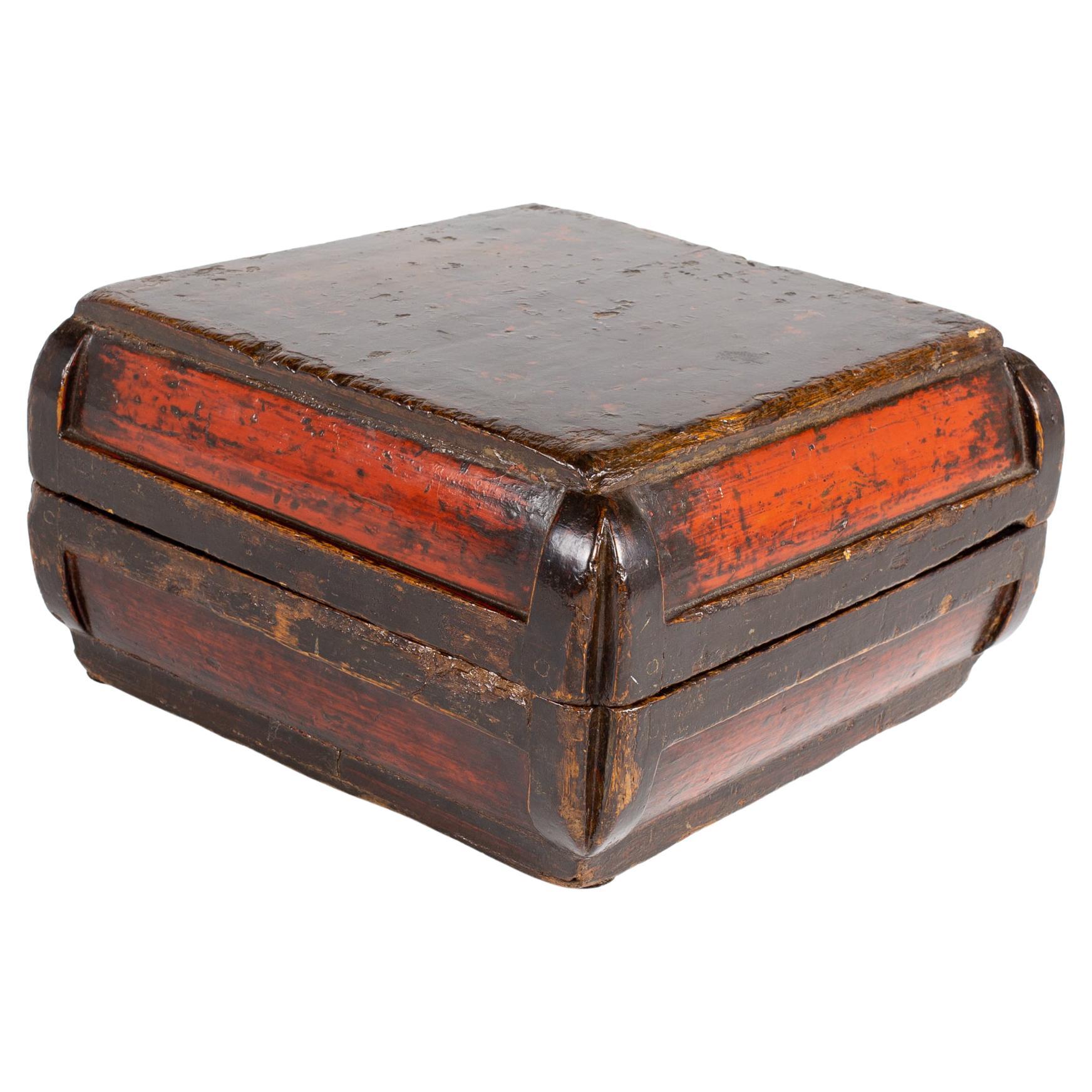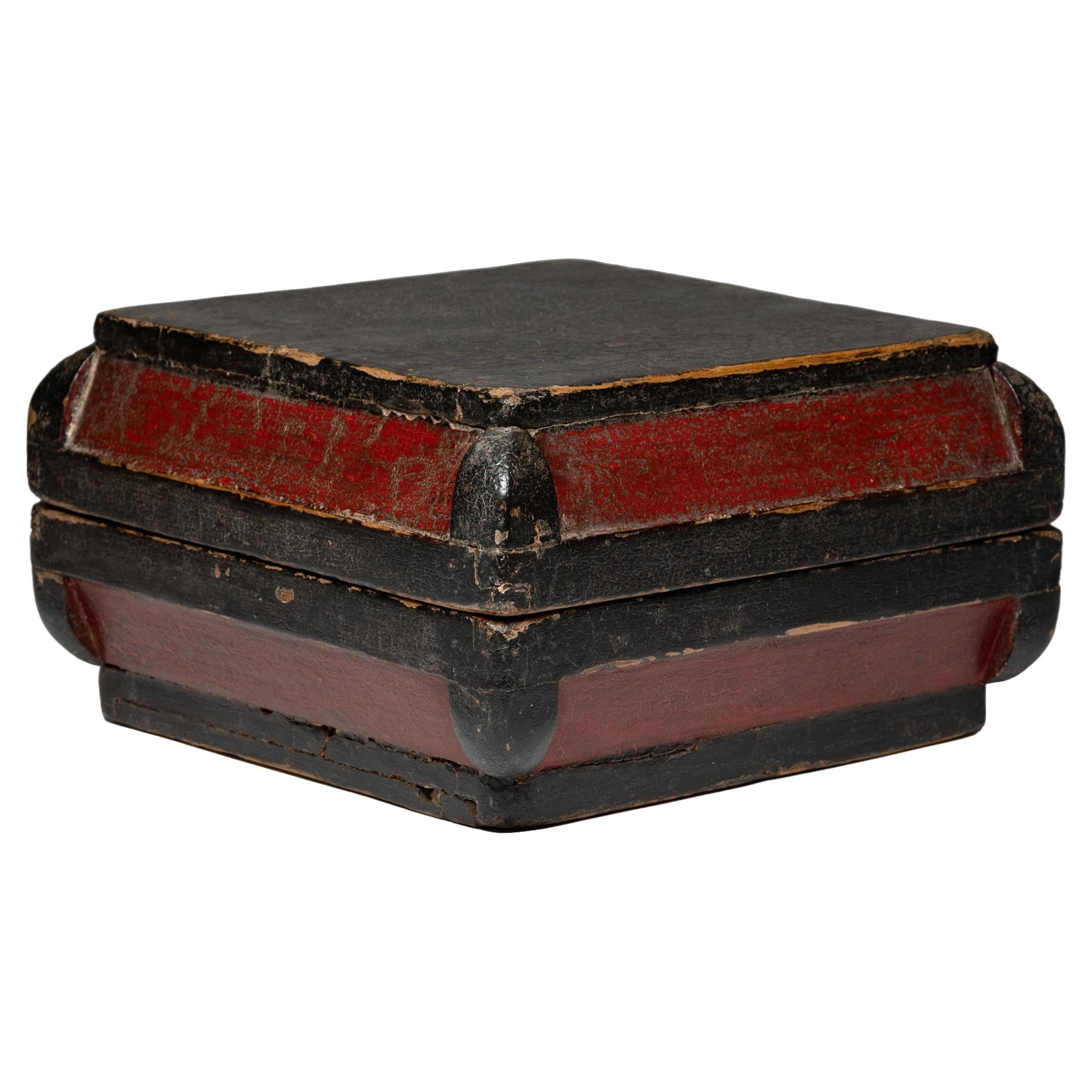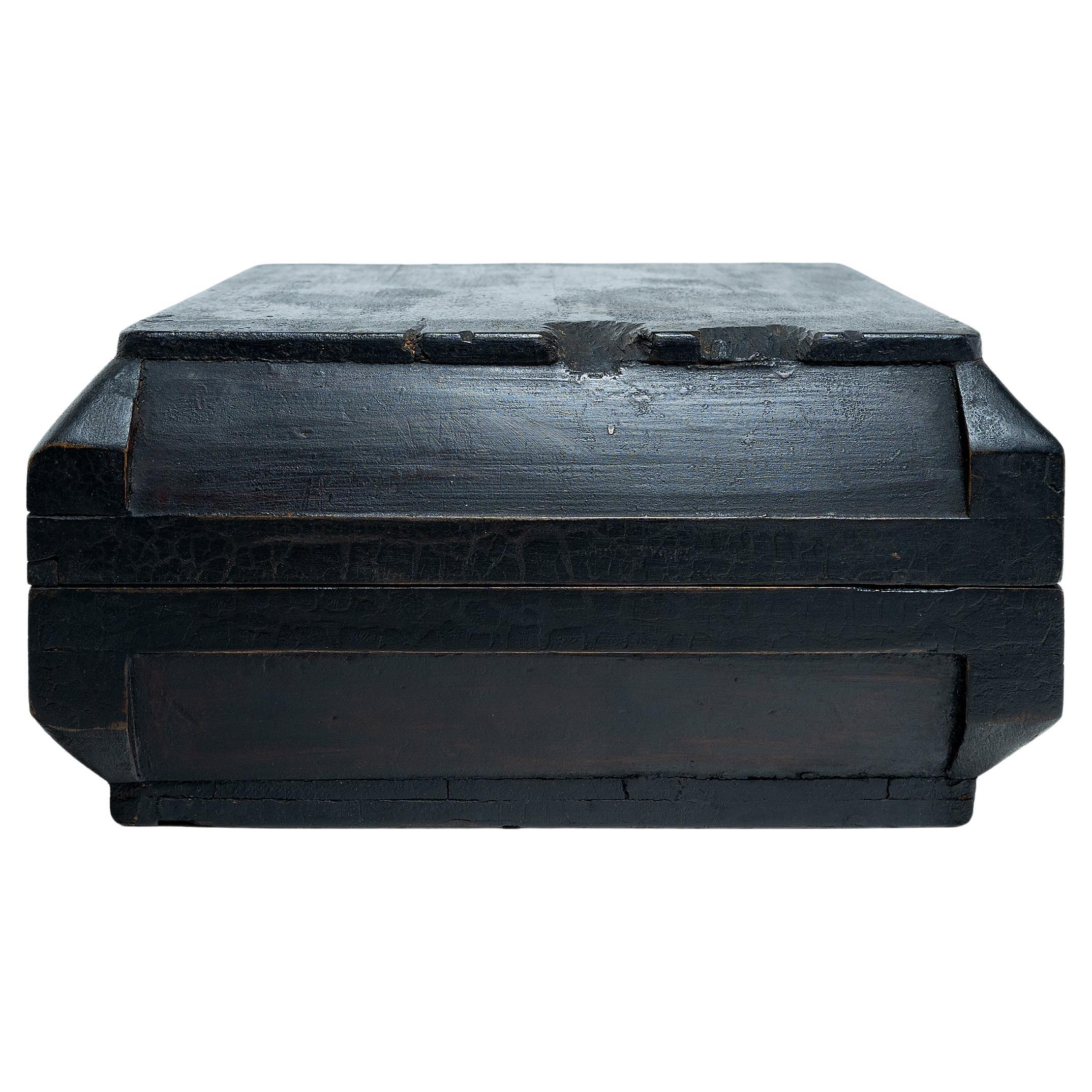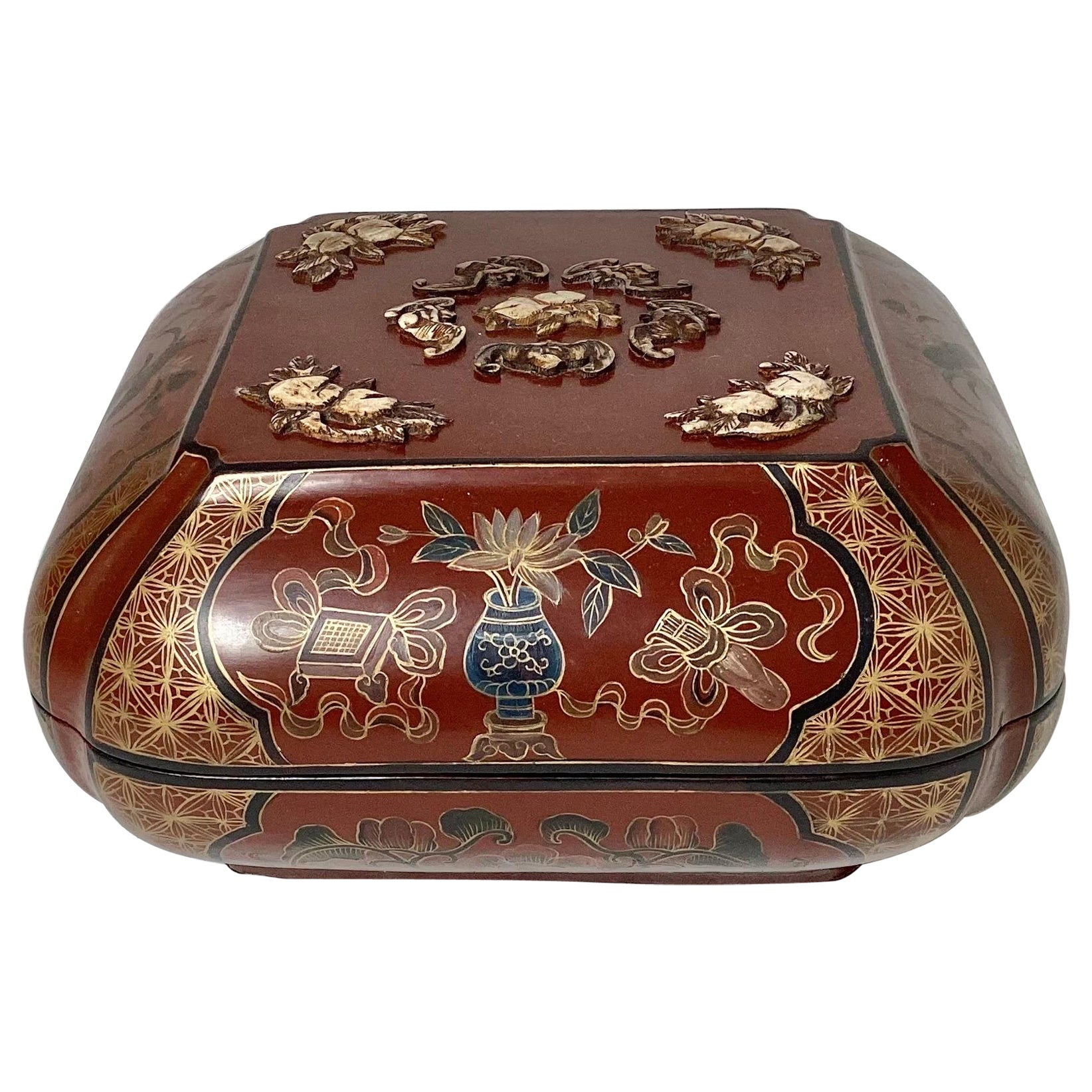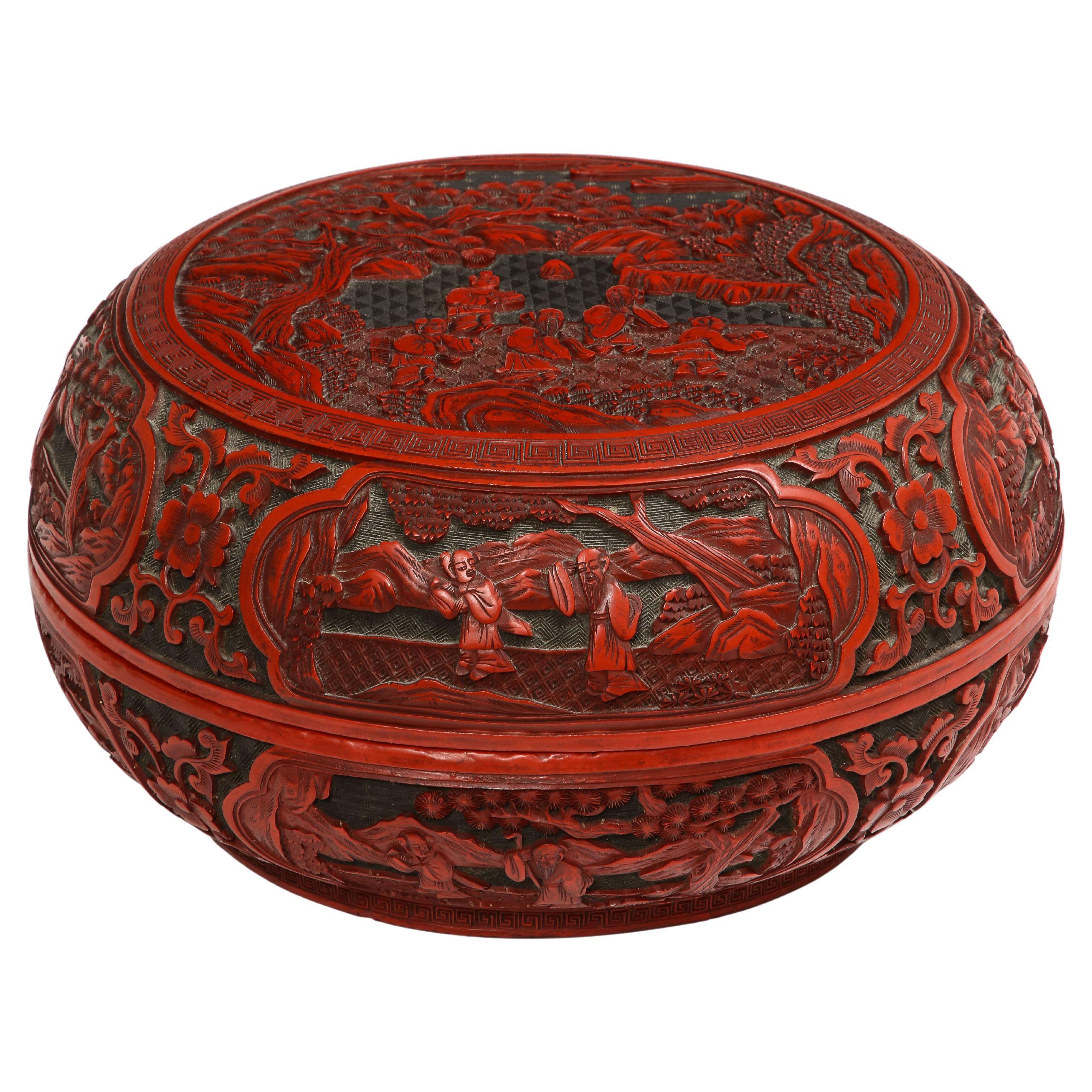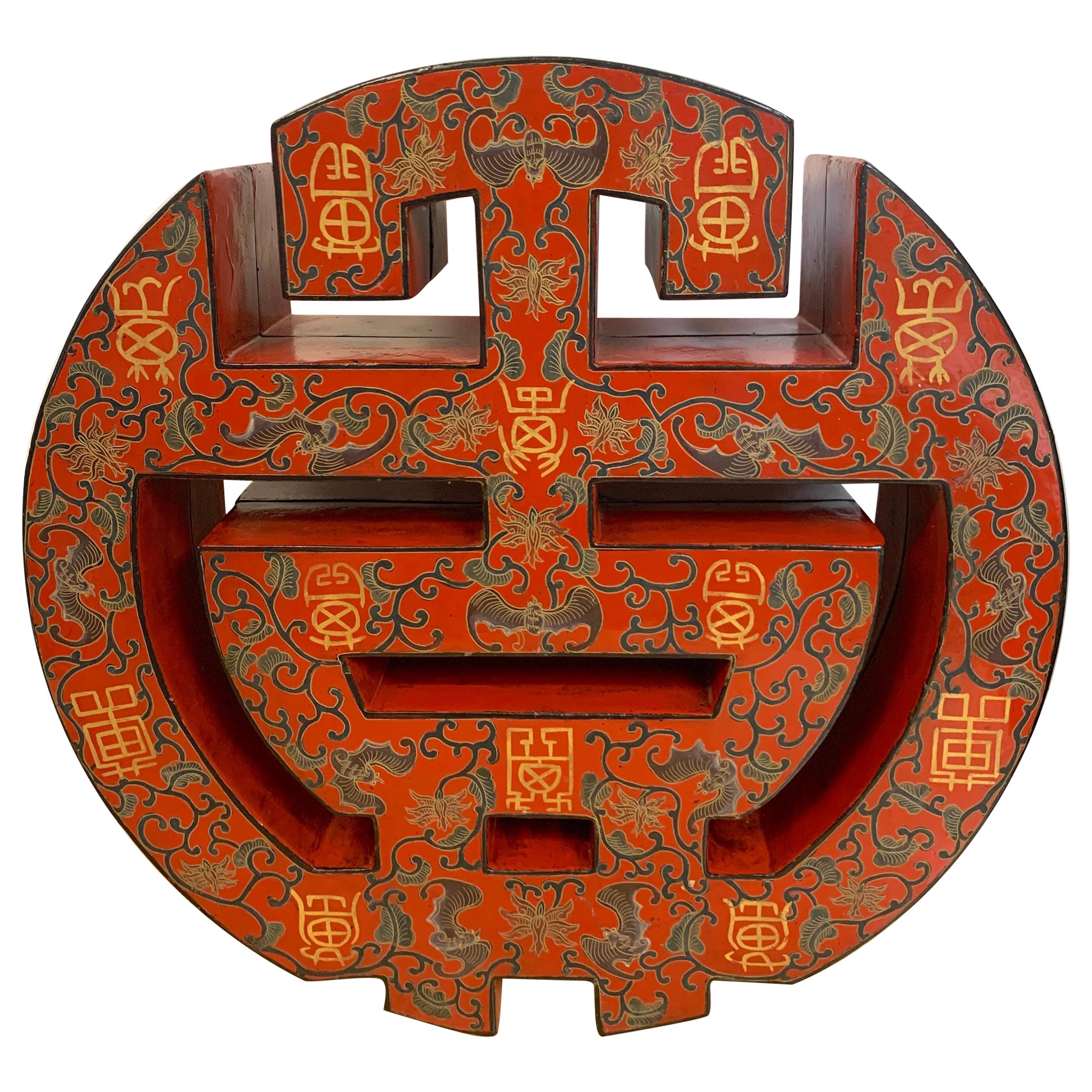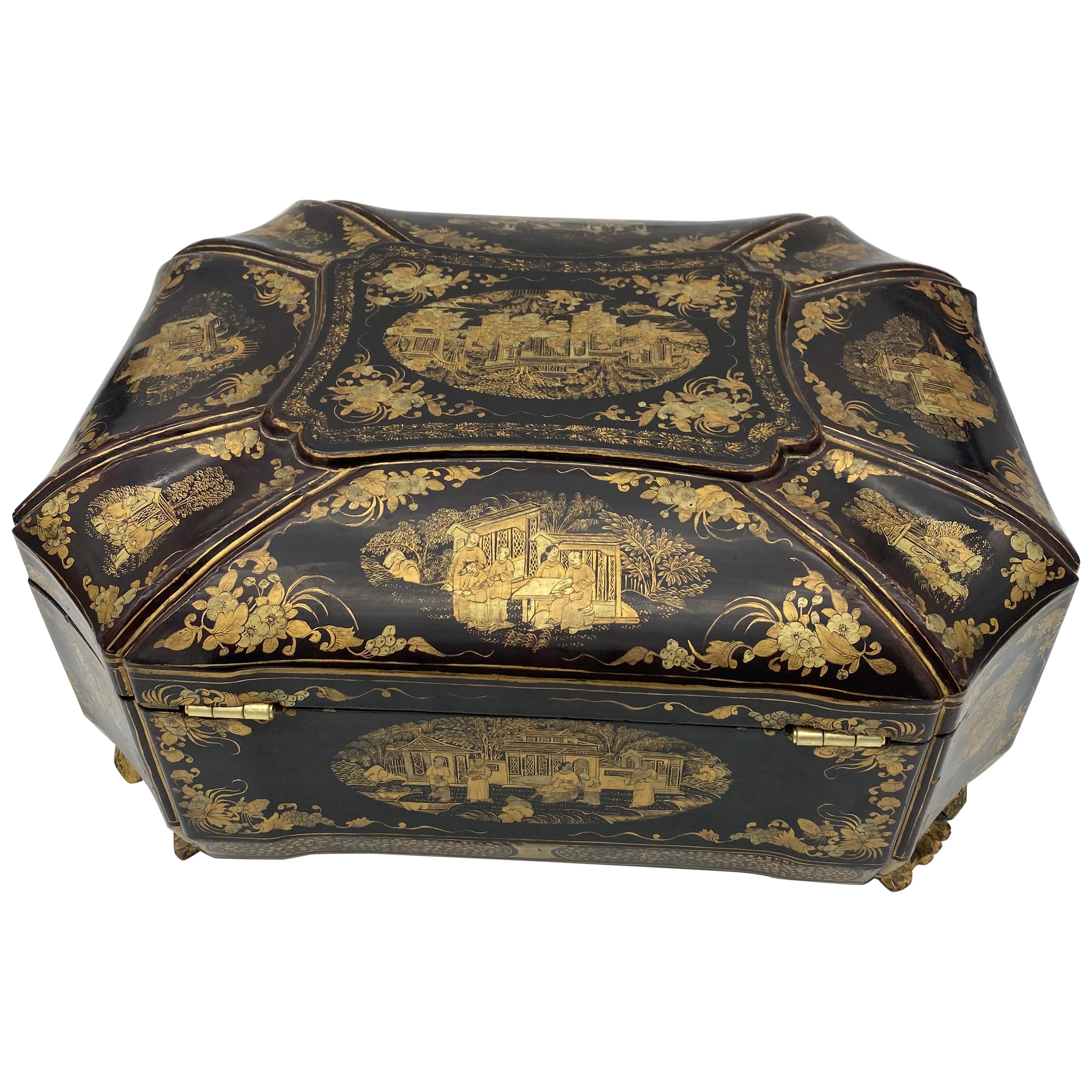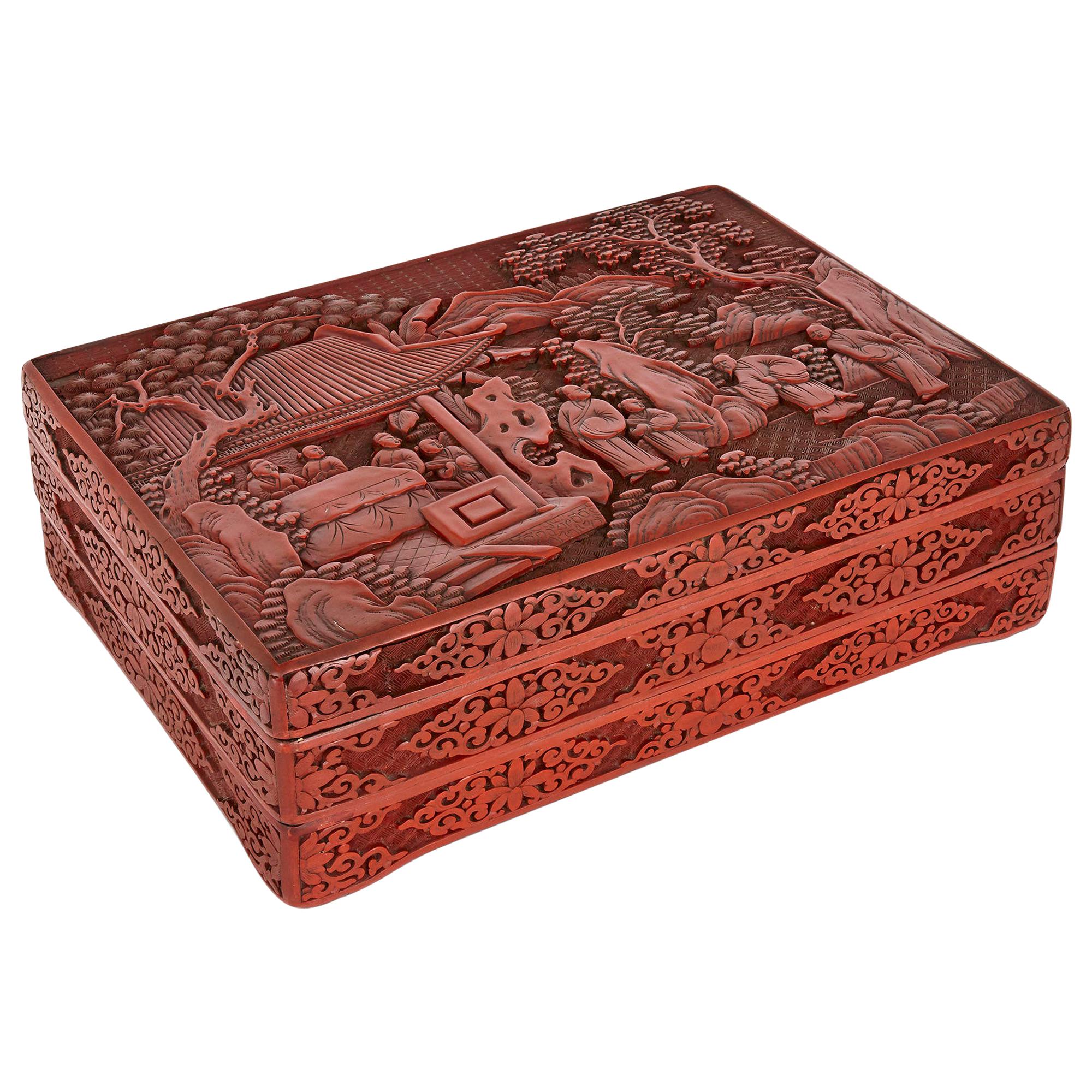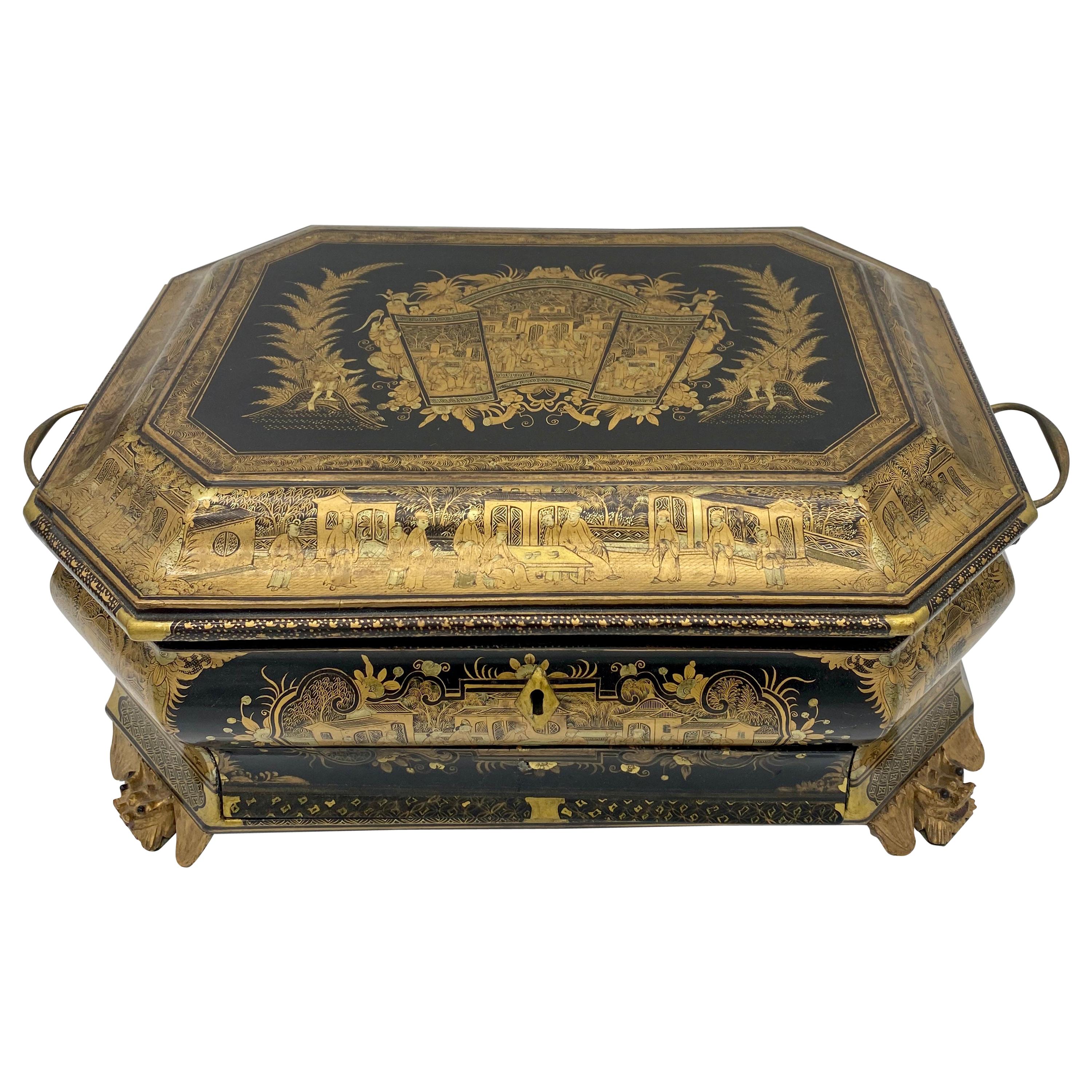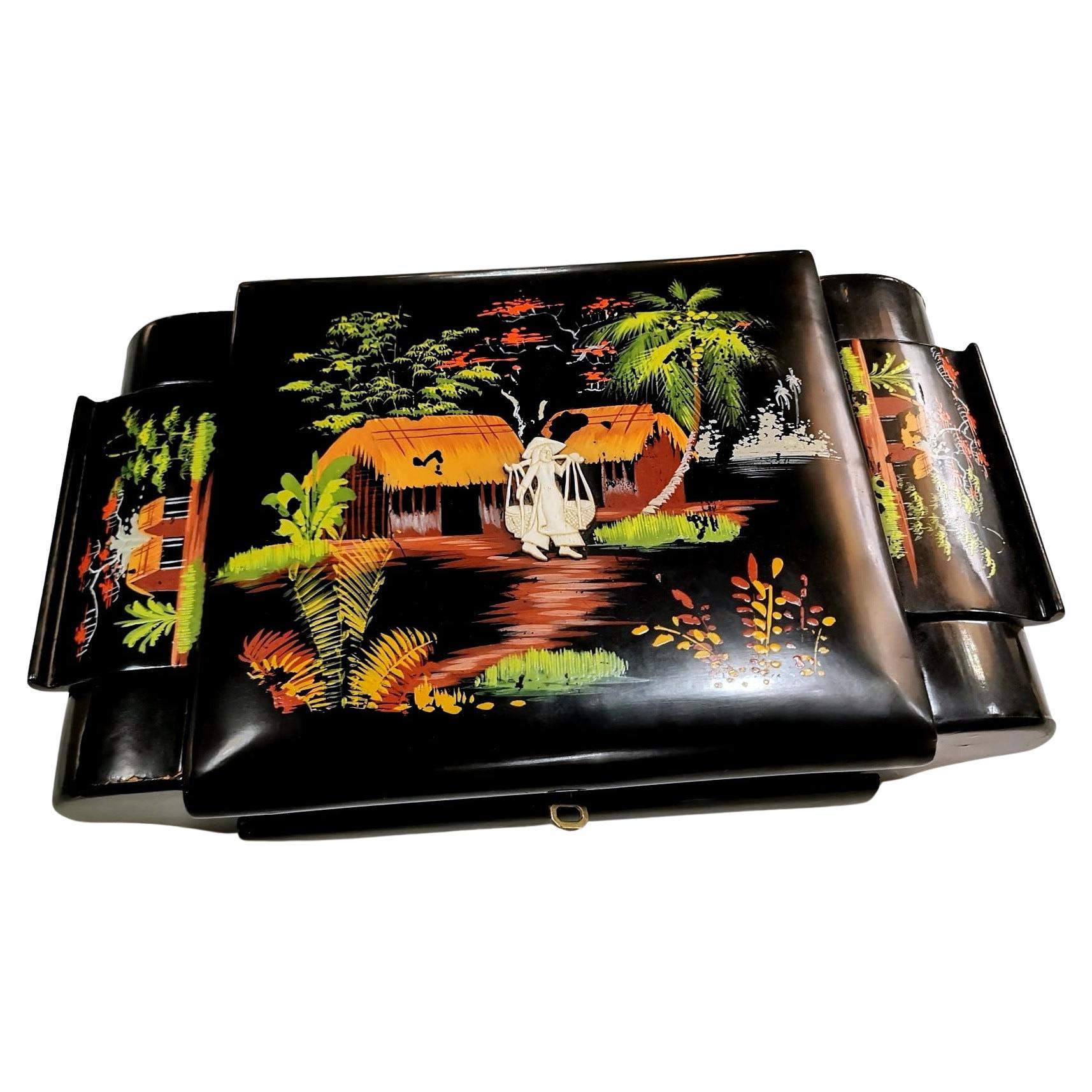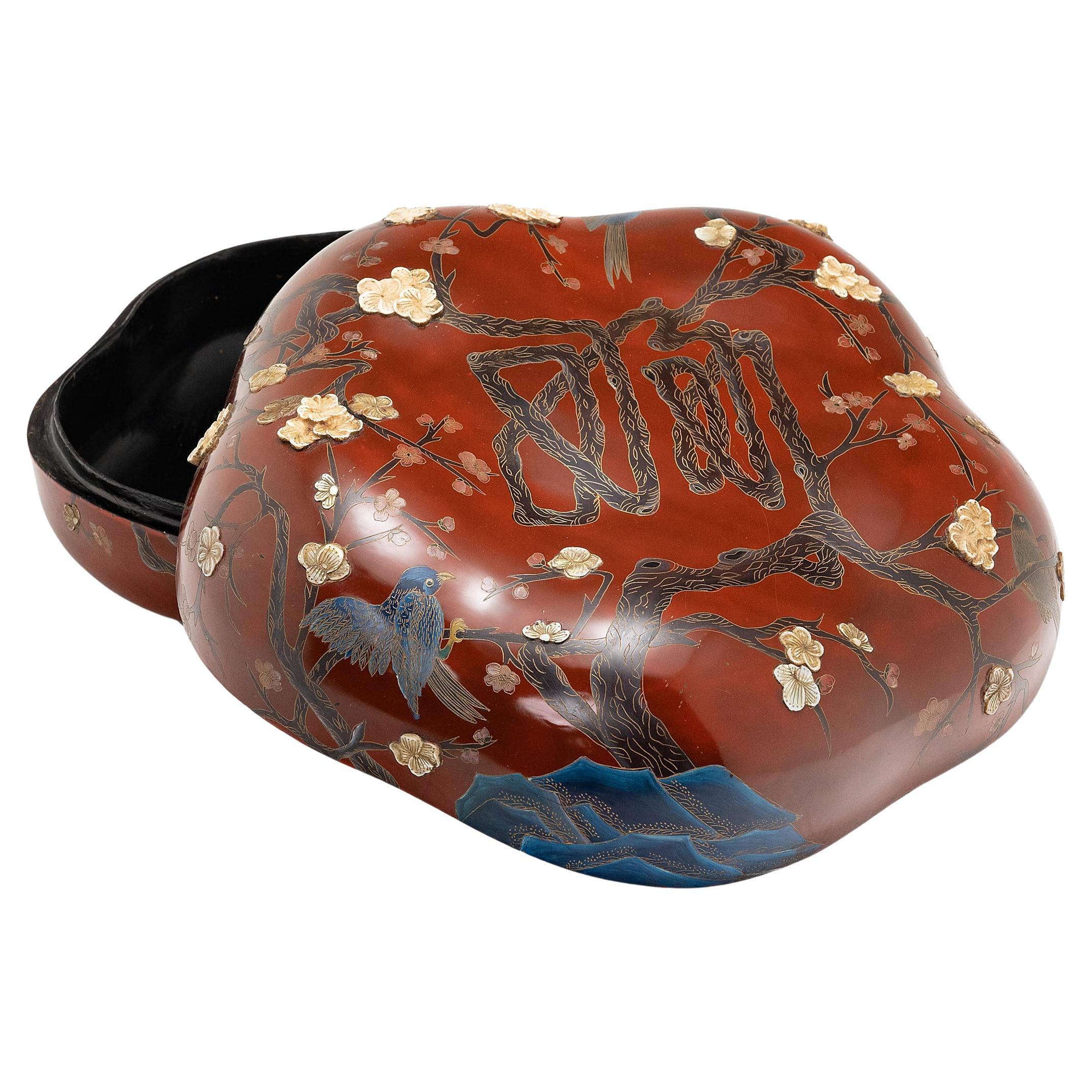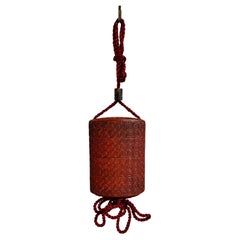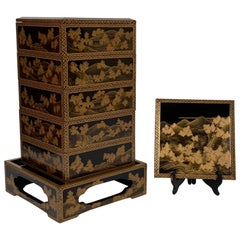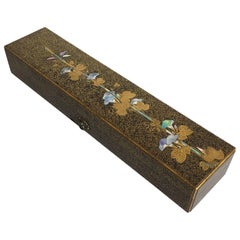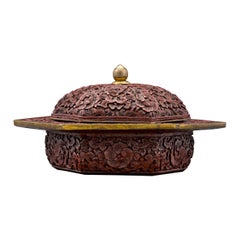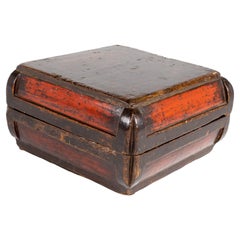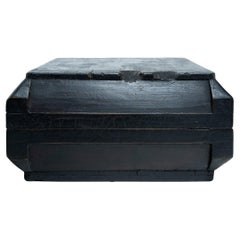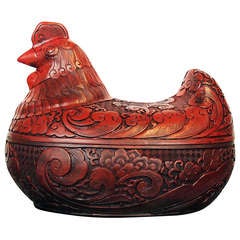
A Chinese Cinnabar Lacquer Hen Form Box
View Similar Items
Want more images or videos?
Request additional images or videos from the seller
1 of 7
A Chinese Cinnabar Lacquer Hen Form Box
About the Item
- Dimensions:Height: 9.5 in (24.13 cm)Width: 11.5 in (29.21 cm)Depth: 9 in (22.86 cm)
- Place of Origin:
- Period:
- Date of Manufacture:Early 20th century
- Condition:Wear consistent with age and use.
- Seller Location:Austin, TX
- Reference Number:1stDibs: LU8947816509
About the Seller
5.0
Gold Seller
Premium sellers maintaining a 4.3+ rating and 24-hour response times
Established in 2001
1stDibs seller since 2010
340 sales on 1stDibs
Typical response time: 1 hour
Authenticity Guarantee
In the unlikely event there’s an issue with an item’s authenticity, contact us within 1 year for a full refund. DetailsMoney-Back Guarantee
If your item is not as described, is damaged in transit, or does not arrive, contact us within 7 days for a full refund. Details24-Hour Cancellation
You have a 24-hour grace period in which to reconsider your purchase, with no questions asked.Vetted Professional Sellers
Our world-class sellers must adhere to strict standards for service and quality, maintaining the integrity of our listings.Price-Match Guarantee
If you find that a seller listed the same item for a lower price elsewhere, we’ll match it.Trusted Global Delivery
Our best-in-class carrier network provides specialized shipping options worldwide, including custom delivery.More From This Seller
View AllKorean Inlaid Lacquer Mandarin Duck Form Box, Early 20th Century, Korea
Located in Austin, TX
An absolutely lovely Korean black lacquer and abalone shell inlaid box in the form of a pair of Mandarin ducks, early 20th century, Korea.
The ...
Category
Vintage 1920s Korean Lacquer
Materials
Abalone, Lacquer
Japanese Carved Cinnabar Lacquer Inro, Meiji Period, late 19th c, Japan
Located in Austin, TX
A good Japanese carved cinnabar three case inro with mixed metal ojime, Meiji period, late 19th century, Japan.
The three case inro of standard form, comprised of three container se...
Category
Antique Late 19th Century Japanese Meiji Lacquer
Materials
Silver, Copper
Japanese Maki-e Lacquer Stacking Box, Jubako, Meiji Period, Japan
Located in Austin, TX
A fine and impressive Japanese gold maki-e decorated black lacquer five-tier jubako with presentation tray, two lids, and the original tomobako storage box, Meiji period, late 19th c...
Category
Antique Late 19th Century Japanese Meiji Lacquer
Materials
Lacquer
Japanese Edo Period Igarashi School Long Lacquer Box, Tanzaku-Bako
Located in Austin, TX
A stunning Japanese Edo period lacquer tanzakubako, box for poem cards, late 18th-early 19th century, Edo Period, Japan.
Attributed to the Igarashi School, this box is masterfully ...
Category
Antique Early 19th Century Japanese Edo Lacquer
Materials
Mother-of-Pearl, Lacquer
Large Japanese Lacquer Document Box, Ryoshibako, Edo/Meiji period, Japan
Located in Austin, TX
A large and magnificently decorated Japanese lacquer document box, ryoshibako, signed Umeboshi/Baikyo, late Edo or early Meiji Period, mid 19th century, Japan.
The large document box, ryoshibako, of tall, rectangular shape with rounded corners, and fitted with an inrobuta (flush-fitting) cover with beveled edges. The exterior of this exquisite box is decorated all over with fifteen different raised reserves shaped as uchiwa (paddle) fans against a lush and intricate krikane ground imitating shagreen.
The uchiwa shaped reserves all of takamaki-e, and exquisitely painted with designs of animals, flowers, and landscapes in silver, gold, maki-e, hiramaki-e, and takamaki-e, with kirikane, nashiji, and polychrome embellishments, upon gold lacquer fudame grounds.
The interior of the lid is nothing short of spectacular, featuring a large design of a magnificent and beautifully detailed rooster and hen with chicks gathered around a lazy stream. Large stalks of chrysanthemum bloom behind them. All against an ethereal nashiji ground.
The cover of the box features five reserves:
1. Three minogame (turtles with long tails), symbolizing longevity
2. "Narihira Crossing the Sumida" from The Tales of Ise...
Category
Antique 1860s Japanese Meiji Lacquer
Materials
Softwood, Lacquer
Japanese Tagasode (Whose Sleeves?) Lacquer Incense Box, Kobako, Meiji Period
Located in Austin, TX
A fine and unusual Japanese lacquer box for incense accessories, kobako, featuring a tagasode (whose sleeves?) design, Meiji Period, circa 1900, Japan.
The exquisite box of simple rectangular shape worked in maki-e lacquer, taka-maki-e, and raden, all against a lush ground of gold nashiji. Fitted with silver rims.
The main decorative element of the box depicts a six panel folding screen, byobu, showing an interior scene with kimono strewn over a rack, a motif known as tagasode (whose sleeves), all in raised taka-maki-e lacquer and inlaid raden.
The screen depicts an intimate room with tatami mats on the floor and sliding shoji doors in the background. The foreground depicts a large clothing...
Category
Antique Early 1900s Japanese Meiji Lacquer
Materials
Silver
You May Also Like
Chinese Cinnabar Lacquer Cuspidor
Located in New Orleans, LA
This intriguing Chinese zhadou is intricately carved of fine cinnabar lacquer. A work of exceptional artistry, this covered bowl is adorned with an intricately carved floral motif on all surfaces, including the cover and the wide rim. Also known as a cuspidor or spittoon, this rare container would have been used by members of the imperial family and scholar- officials at the court. Carved during the Kangxi period (1662-1722), this charming piece exhibits the high detail and charm associated with items from that period, making it a true treasure,
Early 18th century (Kangxi dynasty)
Measures: 6 ¼” wide x 3 ¼” high
Cinnabar has been revered for its color all over the world. It has been found in the royal burial chambers of the Mayas, in the rituals of India, and in the ruins of ancient Greece and Rome. In China, cinnabar and gold were the two most important elements in alchemy. Mined since the Neolithic Age, cinnabar is the ore of mercury, and as such, it can be incredibly toxic, especially when mining. In fact, during the Roman Empire, miners at Spain’s Almadén mine in Spain were frequently exposed to mercury fumes, and the subsequent, often fatal, sickness was considered an occupational hazard.
The most popular known use of cinnabar is in Chinese carved lacquer-ware, a technique that is believed to have originated in the Song Dynasty, in which cinnabar is ground to a powder and added to clear lacquer. As with mining, there was inherent danger of mercury poisoning for those who carved the lacquer, as mercury was also released into the air when artisans ground the pigments. Most antique cinnabar...
Category
Antique 18th Century Chinese Other Lacquer
Materials
Lacquer
Antique Chinese Red Lacquer Box
Located in Countryside, IL
Antique Chinese red lacquer box
This box measures: 14.5 wide x 14.5 deep x 8 inches high
About Photos: We take our photos in a co...
Category
Early 20th Century American Lacquer
Materials
Malachite
Chinese Lacquered Snack Box, c. 1820
Located in Chicago, IL
This simple lacquered container was once used as a 19th-century snack box, presented as a gift during holidays and special occasions. To the delight of the r...
Category
Antique Mid-19th Century Chinese Qing Lacquer
Materials
Wood, Lacquer
Chinese Black Lacquer Snack Box, c. 1820
Located in Chicago, IL
This simple lacquered box was once used as a 19th-century snack box, presented as a gift during holidays and special occasions. To the delight of the recipients, the unassuming box w...
Category
Antique Early 19th Century Chinese Qing Lacquer
Materials
Wood, Lacquer
Antique Chinese Lacquer Table Box 1920's
Located in Lambertville, NJ
Beautiful iron red lacquer Chinese table box. The red background with gilt decoration with carved bone inlay on the top. 9.5 inches square, T...
Category
Vintage 1920s Chinese Chinoiserie Lacquer
Materials
Bone, Wood, Lacquer
18th/19th Century Chinese Cinnabar Circular Box with Multiple Cartouches
Located in New York, NY
An 18th/19th Century Chinese cinnabar circular box with multiple cartouches of Families. This is a marvelous piece with very fine details on the main top panel of the box. The top pa...
Category
Antique 1790s Chinese Qing Lacquer
Materials
Lacquer
Recently Viewed
View AllMore Ways To Browse
Cinnabar Box
Cinnabar Box Antique
Chinese Cinnabar Box
Antique Chinese Cinnabar Box
Wajima Lacquer
Inro Medicine Cases
Manju Netsuke
Burmese Temple Box
Japanese Ivory Figurines
Negoro Tray
Samurai Hat
Bronze Suiteki
Burmese Kammavaca
Early 20th Burmese Lacquered Pagan
Sofu Teshigahara
Thai Offering Bowl
Vintage Korean Black Lacquer Mother Of Pearl
Geisha Makeup
